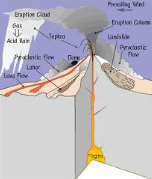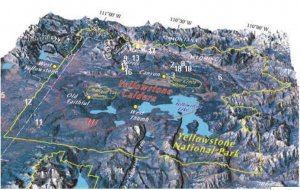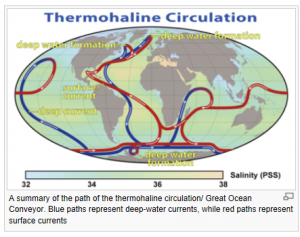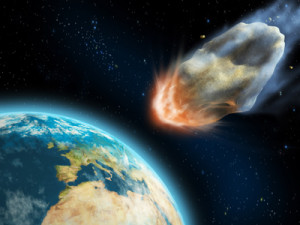Tag Archives: doomsday
Doomsday Prep Survival Plans – Get A Ghillie Suit
San Fransisco, CA — (SBWIRE) — 06/25/2012 — Consumers interested in doomsday  preparation are seeking the tools, camouflage clothing and information necessary to arm themselves with an effective survival plan for a zombie apocalypse or end-of-days events. The right survival plan will include all of the items and details necessary to keep family and friend’s safe regardless of what may happen in the months and years to come.
preparation are seeking the tools, camouflage clothing and information necessary to arm themselves with an effective survival plan for a zombie apocalypse or end-of-days events. The right survival plan will include all of the items and details necessary to keep family and friend’s safe regardless of what may happen in the months and years to come.
GhillieSuitClothing.com is gaining attention as a source for extensive editorial content and a large collection of good quality ghillie suits, camouflage clothing enabling customers to go undercover, blending into nature, while maintaining the flexibility and comfort to move around.
Made from natural jute twine, burlap or synthetic thread, ghillie suits are designed to break up the human outline and resemble heavy foliage. GhillieSuitClothing.com features a wide-range of good quality ghillie suits, from the bushrag or warrior ghillie suit to the woodland jackal and zombie hunter ghillie suit.
The suits and camouflage clothing are organized into convenient categories on the left side-bar of each page on the site, so shoppers can find exactly what they need to meet their needs. Customers can go to the Popular Brands section on the side-bar to browse products from brand names, including GhillieSuits, Chameleon, CamoSystems and more. If they already know exactly what they need, shoppers can use the site’s search engine tool in the header.
Extensive editorial content throughout GhillieSuitClothing.com enables visitors to learn more about how to select the right ghillie suit and camouflage clothing items as well as how people are using these products for simulation sports, Halloween, undercover surveillance, hunting and in the military.
GhillieSuitClothing.com was designed to meet a previously unmet need for good quality ghillie suits, according to the site owner, “I was shocked to see the lack of information about commercial ghillie suits available so I started Ghillie Suit Clothing in 2007. Ghillie Suit Clothing was opened because I was frustrated when I was shopping for a ghillie suit. How was I supposed to make a decision based on one picture of a product or a vague description?”
“As the store owner, my goal was to create a store that presented its products with as much detailed and accurate information as possible. I am hoping that by doing so, consumers can make an informed purchase decision based on the correct information.”
Consumers can choose a product item to see high quality images as well detailed specifications and editorial content to provide customers with the knowledge they need to make an informed choice. The website’s blog is available in the header and provides additional high quality editorial content and customer photos.
Visitors to the site can sign-up for an account through the link in the header to create wish lists and proceed with making a purchase. GhillieSuitClothing.com provides exceptional customer service and will walk customers through the process to identify the right ghillie suits and camouflage clothing to meet their specific purposes.
About GhillieSuitClothing.com
GhillieSuitClothing.com has provided good quality ghillie suits and camouflage clothing since 2007. With a wide-range of product items, including the warrior ghillie suit, ghost ghillie suit, and ghillie suits for kids, the website assists customers through the process of finding all of the items they need for their doomsday survival plans. High quality images, in-depth editorial content, and user-friendly website navigation, make the site the preferred choice for consumers. For more information, visit http://www.ghilliesuitclothing.com
DOOMSDAY 2012 – NATURAL DISASTERS COULD WIPE OUT YOUR ZOMBIE WORRIES
Floods, earthquakes, and volcanic eruptions. These are just a few of the natural disasters that may befall our planet between now and December 21st, 2012. As we speak, the summer solstice is upon us, but it’s the winter solstice that we should be worrying about.
Flooding. There are several different scenarios in which massive floods may overcome our planet. One is oceanic rise. If the oceans rise, the coastal areas of the world will recede, and millions of people living in these areas will either die or have to move further inland. Global warming is currently being blamed for the Greenland ice sheets and polar cap melt off that has been going on for years. I think the majority of people are skeptical of this diagnosis, or just don’t know what to think, as scientists seem to fall on both sides of this debate. What no one can dispute is that this is happening.

If solar flare/sunspot activity on 12/21/2012 should be great enough to gain entrance to our atmosphere on this day, it could accelerate the ice melt and the oceans will rise. If the temperature of the earth’s surface rises just a few degrees, this would also happen. How quickly, obviously no one knows. One thing rapid or even gradual ice melts will do is disrupt the thermohaline circulation of water in the Atlantic Ocean, an ocean-based system of heat delivery sometimes referred to as the North Atlantic thermal conveyor belt.
The northeastern States, eastern Canada and, primarily, Europe enjoy warmer climates than they otherwise would because of the thermohaline circulation. This vast ocean conveyor sweeps warm, salty water from tropical latitudes north along the surface. After shedding heat to the atmosphere, the chilled brine becomes denser and sinks. Thousands of feet beneath the surface it flows back toward the equator, completing the loop.
But as the climate warms disproportionately at the poles, the gears of the system begin to wobble. Freshwater runoff from Greenland’s ice cap and from melting glaciers across the Arctic, combined with increased precipitation, will form a thick, buoyant cap over the North Atlantic. Already, this gigantic vortex may be sputtering. The surface of the North Atlantic is becoming noticeably less salty, and thus less driven to sink.
 Thermohaline circulation shut down as recently as 8200 years ago, and some scientists contend that the Little Ice Age of 1300 to 1850 was due to a hiccup in the system. The chance of another collapse is hotly debated, in scientific circles, and may throw us into another Little Ice Age again.
Thermohaline circulation shut down as recently as 8200 years ago, and some scientists contend that the Little Ice Age of 1300 to 1850 was due to a hiccup in the system. The chance of another collapse is hotly debated, in scientific circles, and may throw us into another Little Ice Age again.
Earthquakes are a distinct possibility, and tectonic shift may occur. Tectonic shift and rise can be a direct result of earthquakes, as well as the weight and motion of melting water, among other things. It may well force the earth’s mantle to rise up and reform our planet.
Volcanic eruptions are a potentially catastrophic event that could be in store for us. The caldera at Yellowstone National Park, the World’s largest volcano, is said by scientists to be overdue for an eruption. This volcano is sometimes referred to as a Super volcano. There are over 3000 recorded earthquakes at Yellowstone National Park each year, and any sort of cataclysmic event on a worldwide scale may be the spark that  forces the caldera to erupt. That eruption, along with any others that may happen on that fateful day, 12/20/2012, would put enough volcanic ash into the atmosphere, as to blot out the sun for years, perhaps even decades. And then there are all the different types of gasses that will also be in the air, and oxygen purity levels will drop dramatically. Without Photosynthesis, a process whereby plants capture the suns energy to split off water’s hydrogen from oxygen. Hydrogen is combined with carbon dioxide to form glucose and release oxygen. If the sun is blotted out and plants can’t grow and capture carbon dioxide, while releasing oxygen, we may lose our ability to breath, among other things. This will also have a devastating effect on the global food chain. In my opinion, this will be the start of a fatal global downward spiral, from which there will be no return.
forces the caldera to erupt. That eruption, along with any others that may happen on that fateful day, 12/20/2012, would put enough volcanic ash into the atmosphere, as to blot out the sun for years, perhaps even decades. And then there are all the different types of gasses that will also be in the air, and oxygen purity levels will drop dramatically. Without Photosynthesis, a process whereby plants capture the suns energy to split off water’s hydrogen from oxygen. Hydrogen is combined with carbon dioxide to form glucose and release oxygen. If the sun is blotted out and plants can’t grow and capture carbon dioxide, while releasing oxygen, we may lose our ability to breath, among other things. This will also have a devastating effect on the global food chain. In my opinion, this will be the start of a fatal global downward spiral, from which there will be no return.
Last but not least. Again, in my opinion, the most probable occurrence will be an eruption of the volcano at Cumbre Vieja. Cumbre Vieja is an active volcanic ridge on the volcanic ocean island of Isla de La Palma in the Canary Islands, Spain. History has recorded volcanic eruptions of the Cumbre Vieja in 1470, 1585, 1646, 1677,m 1712, 1949, and 1971.
 During the 1949 eruption, three vents—Duraznero, San Juan and Hoyo Negro—opened and expelled massive amounts of lava. Also during the eruption two earthquakes happened centered near Jedey. Following the earthquakes a fracture appeared, approximately two miles long, about 1/10 of the exposed length of the Cumbre Vieja. Parts of the western flank of the Cumbre Vieja ridge moved about 1 mile sideways and 2 miles downwards towards the Atlantic Ocean. Scientists have hypothesized that an eruption or even an earthquake would send the western flank of the island sliding into the Atlantic Ocean, creating a Mega Tsunami of biblical proportions. Computer models indicate the resulting gravitational landslide will enter the Atlantic Ocean and create the so called Mega Tsunami, with the initial wave estimated at some 200 feet in height, and a peak to peak height of 1 mile. Estimated speed of the wave is 600 mph. It will reach the African coast in 1 hour, southern england in about 3 to 4 hours, and the eastern seaboard of the United States in about 6 hours. The initial wave will have subsided into a succession of smaller ones each about 100 to 200 feet in height, and may swell to 400 to 600 feet high at a distance of 1 to 2 miles apart, while retaining the original speed. Computer models indicate differing inland inundation measurements, between 15 to 30 miles or more according to the volume of water.
During the 1949 eruption, three vents—Duraznero, San Juan and Hoyo Negro—opened and expelled massive amounts of lava. Also during the eruption two earthquakes happened centered near Jedey. Following the earthquakes a fracture appeared, approximately two miles long, about 1/10 of the exposed length of the Cumbre Vieja. Parts of the western flank of the Cumbre Vieja ridge moved about 1 mile sideways and 2 miles downwards towards the Atlantic Ocean. Scientists have hypothesized that an eruption or even an earthquake would send the western flank of the island sliding into the Atlantic Ocean, creating a Mega Tsunami of biblical proportions. Computer models indicate the resulting gravitational landslide will enter the Atlantic Ocean and create the so called Mega Tsunami, with the initial wave estimated at some 200 feet in height, and a peak to peak height of 1 mile. Estimated speed of the wave is 600 mph. It will reach the African coast in 1 hour, southern england in about 3 to 4 hours, and the eastern seaboard of the United States in about 6 hours. The initial wave will have subsided into a succession of smaller ones each about 100 to 200 feet in height, and may swell to 400 to 600 feet high at a distance of 1 to 2 miles apart, while retaining the original speed. Computer models indicate differing inland inundation measurements, between 15 to 30 miles or more according to the volume of water.
This would greatly damage or destroy cities along the entire North American eastern seaboard, and tens of millions would be killed from Maine to Florida, and everything In between.
So there you have it. Not a pretty picture is it.
ASTEROID COLLISION PENDING – HOW CAN WE AVOID IT?
 Steve Carell’s new movie, Seeking a Friend for the End of the World, opened yesterday. Despite its being billed as a comedy (one with a rather dreary basis), the movie has gotten a lot of people thinking about one thing: if a killer asteroid was headed toward Earth, is there anything we could do as a species to avoid doomsday?
Steve Carell’s new movie, Seeking a Friend for the End of the World, opened yesterday. Despite its being billed as a comedy (one with a rather dreary basis), the movie has gotten a lot of people thinking about one thing: if a killer asteroid was headed toward Earth, is there anything we could do as a species to avoid doomsday?
The unfortunate truth is that the world would probably be helpless to do anything.
When doomsday scenarios are considered, planners usually give months or even years advance notice time to come up with a plan to divert the colliding body and save the world. Now, as the events of last week show, huge asteroids can, literally, just pop out of the cosmos and into our neighborhood just a few days after discovery.
Right now, there are millions of known asteroids (and untold numbers more undiscovered) floating around the solar system, mostly between Mars and Jupiter, safely out of Earth’s way. Of the millions of asteroids, over 8,800 are classified as near-Earth. Of the near-Earth objects, just over 4,700 are considered as potentially hazardous, which is defined as an object over 500 feet in diameter that can come within 4.6 million miles of Earth.
Obviously, a metallic space rock 500 feet across traveling at up to 15 miles per second could do an immense amount of damage. For comparison, the object (most likely a comet) that caused the Tunguska Incident was probably less than 100 yards (300 feet across) but still leveled forests for over 1,000 square miles.
Needless to say, if a Tunguska-sized object were to hit a populated area, the death toll would be apocalyptic. Large impactor? Worldwide devastation and possibly an end to civilization as we know it. So, if scientists were to discover a doomsday asteroid on a collision course with Earth, could we do anything about it or would we simply have to resign ourselves to a terrible fate and possibly go down in history like the dinosaurs?
The problem with many doomsday scenarios: when contemplating ways to defend our planet, many planners always give several months and often years of notice. Problem: asteroids have a way of sneaking up on us, which is not hard to do considering that there are more people working at the average McDonald’s than there are full-time asteroid hunters manning the world’s observatories. Earlier this year, it was reported that Los Alamos had completed a study wherein nuclear weapons showed promise in deflecting asteroids but, for many, such a scenario should be considered last resort, not first option.
The widely agreed upon solution: early detection, which can only be achieved through a vigilant watch of the skies by skilled astronomers, professionals and amateurs alike.
Global Economic Collapse – Why Hasn’t Obabma Prepped the U.S For Economic Doomsday
Why hasn’t Obama doomsday prepped the U.S. economy?

OK, here’s where we are right now, and it isn’t good:
1. Europe is in recession, and its financial crisis is growing worse. The bailout of Spain was a bust. Yields on Spanish bonds are now at their highest point of the crisis. Here’s looking at you Italy.
2. The sputtering U.S. economy may well be heading into another recession, and the approaching fiscal cliff is hardly helping confidence. It sure looks like nothing will be done on that front before the election.
3. Three-fourths of the BRICs—China, India, and Brazil—are all slowing. There go the emerging-market growth engines.
How to avoid a worsening of this already dire scenario? AEI economist John Makin thinks four steps are urgently needed:
1. Europe’s banking system must be stabilized to end runs from depositors withdrawing funds;
2. Europe must articulate clearly a framework for rapid evolution toward fiscal union;
3. The policy mix that includes additional fiscal stringency in return for rich loans to Europe’s periphery must be softened.
4. The ECB can help calm markets and reduce uncertainty by signaling its support of more accommodation, including a system of deposit insurance for European banks and could cut interest rates by fifty basis points and undertake another round of extra lending to ensure ample liquidity to banks.
I would add that Europe should be cutting taxes, not raising them.
But here’s the problem: As Makin notes, the odds of all that stuff happening are low, maybe a 50% chance depending on “Greece electing a coalition government willing to cooperate with Europe’s core countries to move toward a true monetary and fiscal union.”
So we have a) a 50% probability of a cooperative outcome from the Greek election on June 17, and b) conditional on that, a 50% probability that Europe will be able to quickly move forward to enact a more credible monetary and fiscal union.
Do the math. The joint probability of these events is 25% at best, “meaning there is only a one in four chance that the euro system will survive through the summer. Should the more likely outcome—an acute European financial crisis—emerge, the United States will be forced to act to prevent serious damage to its financial system and economy.”
So we have a 75% chance of a nightmare summer and autumn heading smack into the U.S. elections in November. The only question is how bad it will be. We don’t know what’s beyond the veil formed by the EU financial crisis, so any predictions about Obama vs. Romney are pretty much worthless.
But it’s hard to see how a financial shock would help the Obama campaign. He is the incumbent, after all. While the president cannot be blamed for the financial crisis, the Romney campaign could charge him with not doing everything possible to doomsday prep the U.S. economy for another global economic shock. It’s not like the EU debt crisis popped up in the past few weeks.
Why do we still have the highest corporate tax rate in the world?
Why did Obama nix the Keystone pipeline?
Why is the president still talking about raising taxes?
Why has the White House offered no long-term debt plan to reassure global markets?
Already, Romney has been hitting Obama for becoming obsessed with passing healthcare reform in 2009 and 2010 rather than boosting economic growth and job creation. Expect more of that.
And if the economy slows further—and if Obamacare is tossed by the Supreme Court—it’s a message that may powerfully resonate with voters.

Apocalypse NOW! Surviving the Doomsday Polar Shift in an Inland Lifeboat
Because the STATIM pods are modular, you can customize them for your particular nightmare scenario.
First things first. Before worrying about food storage or access to clean water during a major disaster, you need to make sure you get through the first wave safely. But never fear: When the next big tsunami hits, a water-ready modular bunker called the STATIM pod aims to float you above the flooding.
Invented by Miguel Serrano, President at Brahman Industries, the STATIM (Storm, Tornado And Tsunami Interconnected Modules) pods are designed to withstand the awesome power of tsunamis, while giving survivors a fighting chance in the aftermath.
Brahman Industries calls the pods “inland lifeboats.” The reason: they’re buoyant and self-righting, so when the floods come, they will bob to the surface. They’re also low-tech, easy to maintain, and easy to construct, which means there’s a possibility for wide deployment. The company’s plan is to install and anchor them in flood-prone areas so when the alarm bells ring, those most at risk can rush to the safety of the pods. Inside, up to 50 people can cling to secure seating arrangements.
It’s the end of the world, but this guy is feeling fine.
The biggest issue with rescue-shelter design is always cost. We already know how to make structures that can withstand natural disasters; it’s just incredibly expensive. The key to keeping costs down is using concrete, a cheap and well-understood building material. “We’re addressing a high-priority need with a low tech approach,” says Serrano. When STATIM reaches scale, Serrano aims to offer the 50-person pod at around $1,800 a head.
The tubular hull is made from a series of pre-cast concrete modules. The modules can be created at local factories, shipped separately, and then aligned and winched together on site to create a watertight seal. “Everyone knows how to do this,” says Serrano. According to the company, the assembly process for the pre-cast parts requires about the same amount of knowledge as installing a drain system.
A STATIM pod waits to be assembled.
The pod continues to serve the people inside long after the first wave of disaster. “After Katrina, they spent three weeks just rescuing people with helicopters,” Serrano says. Because the pods are buoyant and equipped with communications devices, rescuers will be able to easily meet up with the pods to tow them away. A boat or helicopter can transport 50 people at a time to safety.
And because the parts are modular, the pods are customizable. By including different segments equipped with all kinds of survival gear, your personal STATIM pod can be modded to your anticipated needs.
The next step, says Serrano, is creating pods that house critical infrastructure. The company has proposed a variation on STATIM called the Genset, which houses working generators. Having survivable power sources would have prevented the Fukushima meltdown, Serrano says, by providing power to the nuclear plant’s critical systems after the tsunami. Other variations include pods with desalination facilities and a version of the pod that can withstand an EMP blast, ensuring that critical electronics would survive a nuclear strike.
The eerily calm diagrammatic disaster illustration. Not pictured: STATIM occupants bracing before nature’s fury.
While the intention of the STATIM system is that they be temporary shelters, let’s indulge ourselves in a little bit of design fiction for a moment. What about the pod’s potential to facilitate long-term living in environmentally extreme places?
As the seas rise and cities fall, imagine a community of these built and arranged in new flood zones, perhaps for scientists seeking to learn about new littoral urban ecosystems or salvagers prospecting for the remaining treasures of a lost civilization. Every night, the tribe would return to their STATIM homes, sleeping soundly with the confident knowledge that when the next flood happens, everyone will be all right.
As an area becomes picked over, helicopter scouts are dispatched to the horizon to find new fields of discovery. When a suitable destination is discovered, the helicopters return, towing the community to their coordinates. In this way, the group slowly makes their way along America’s flooded coastline, passing by long lost levies and through once thriving port towns. Thanks to an accompanying desalination pod, the group can remain operational away from freshwater for a long, long time.
Back in the present, Brahmin’s disaster-related design pulled in seed funding earlier this year. Serrano says that they anticipate the first demonstration units will be available in early 2014. In the meantime, keep watching the horizon.
An exploded view shows how the modules of a STATIM pod are assembled.
Images courtesy of Brahman Industries.




